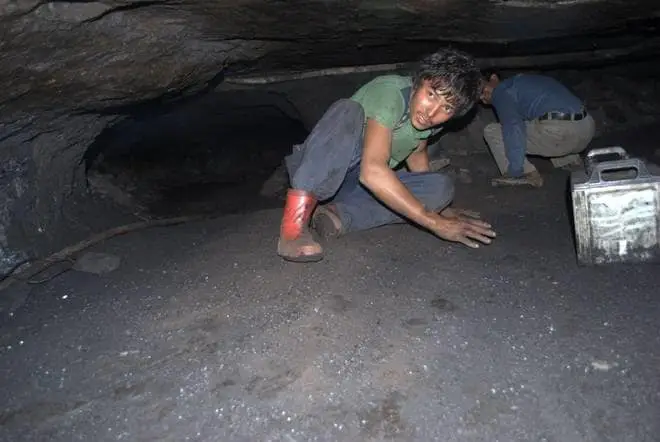Table of Contents

What is Rat Hole Mining ?
Recently, the collapse of a coal mine in Meghalaya or cherrapunji East Jaintia Hills in which 15 workers were trapped, has thrown the spotlight on a procedure known as “rat-hole mining”.
About Rat-hole mining | UPSC – IAS | Pib
- It involves digging of very small tunnels, usually only 3-4 feet high, without any pillars to prevent collapse, in which workers (often children) enter and extract coal.
- The National Green Tribunal (NGT) banned it in 2014 on grounds of it being unscientific and unsafe for workers. However, the state government appealed the order in the Supreme Court.
- Even after ban, it remains the prevalent procedure for coal mining in Meghalaya as no other method would be economically viable in Meghalaya or cherrapunji, where the coal seam is extremely thin.
Negative impacts of Rat Hole Mining | UPSC – IAS | Pib
- Environmental Degradation: It has caused the water in the Kopili river (flows through Meghalaya and Assam) to turn acidic.
- Pollution: Roadsides used for piling of coal leads to air, water and soil pollution.
- Exploitation of workers: Maximum mining in Meghalaya is from rat hole mining where workers put their lives in danger but benefits are cornered by few private individuals.
- Risk to Lives: Rat-holes mines without adequate safety measures pose high risk to miner’s lives. According to one estimate, one miner dies in these rat-holes mines every 10 days.
- Fueling illegal activities: Illegal money earned from these unlawful mines also end up fueling insurgency in the state.
- Encouraging Child Labor: According to a Shillong based NGO, rat-hole mining employs 70,000 child laborers.
Advantages of Rat-hole mining | UPSC – IAS | Pib
- Less Capital Intensive: This type of mining when done in a scientific way, with suitable equipment is less capital intensive.
- Less Polluting: Unlike big mine fields which leave the nearby area nearly uninhabitable, rat-hole mines are less polluting to soil, air and water.
- Easy self-employment: rat-hole mining provides easy self-employment to people.
Why does it continue ? | UPSC – IAS | Pib
Political Influence: Maximum politicians are either owners of mines or have stakes in the largely unregulated coal mining and transportation industry.
- Populism: Directly and indirectly about 2.5 lakh people are dependent on rat-hole mining economy, having influence on 16 out of 60 assembly seats.
- Lack of alternative Employment opportunities: It forces people to work in these dangerous mines.
- Lack of Adequate Policy: The NGT finds The Meghalaya or cherrapunji Mines and Mineral Policy, 2012 inadequate. The policy does not address rat-hole mining and instead states: “Small and traditional system of mining by local people in their own land shall not be unnecessarily disturbed”.
- Use of Violence by Mining Mafia: Anyone who reports on these illegal mining activities is met with violence.
- Legal Framework: Mining activities are a state subject, but safety of mine workers is a central subject which creates problems in implementation of safety policies.
- Misuse of Sixth Schedule Provisions: The 6th Schedule of the Constitution intends to protect the community’s ownership over its land and the community’s autonomy and consent over its nature of use. Coal mining currently underway in Meghalaya was a corruption of this Constitutional Provision wherein private individuals having private interests in earning monetary benefits from minerals vested under the land are engaging in coal mining.
- Lack of Monitoring: Mining activities are spread across too vast an area spreading over four districts.

